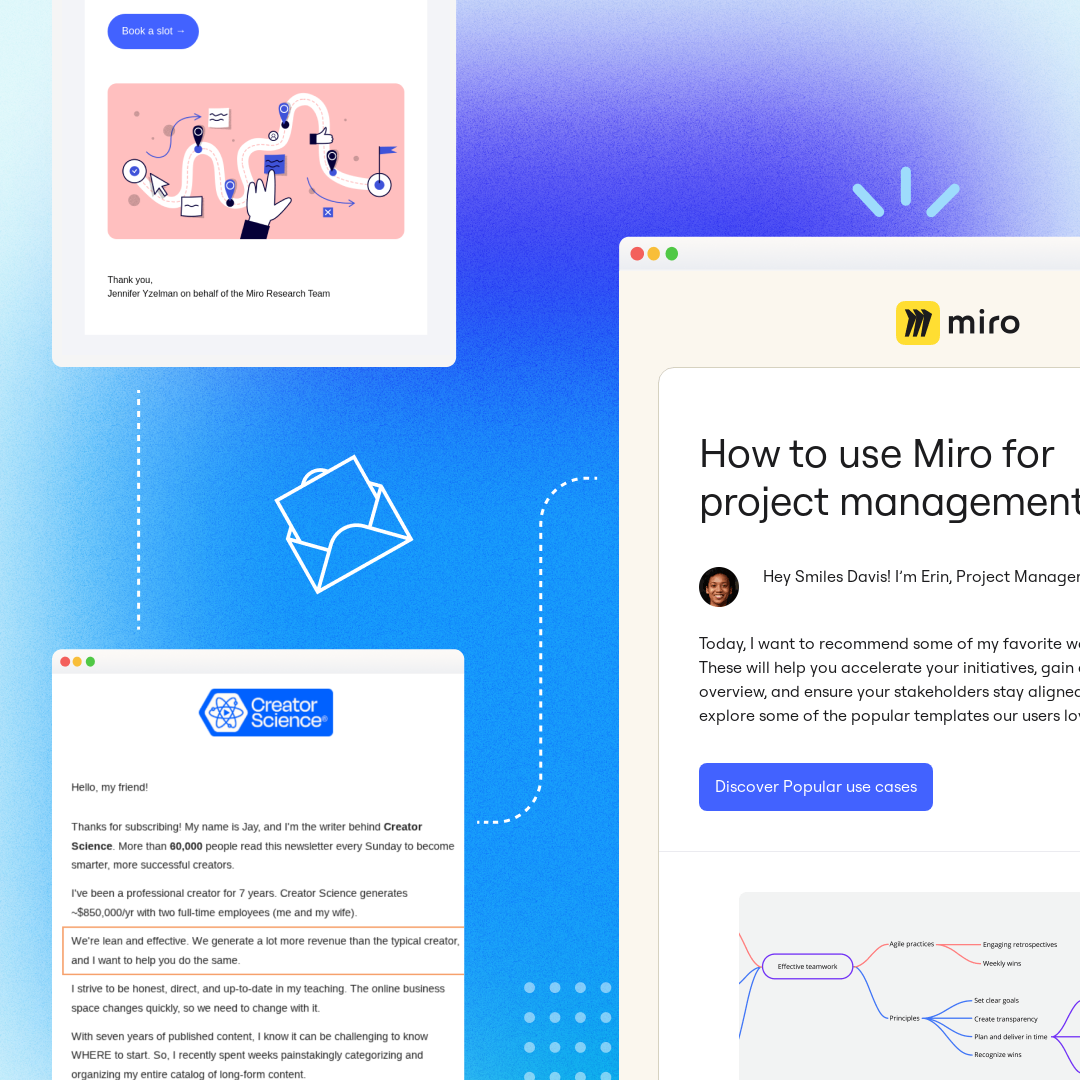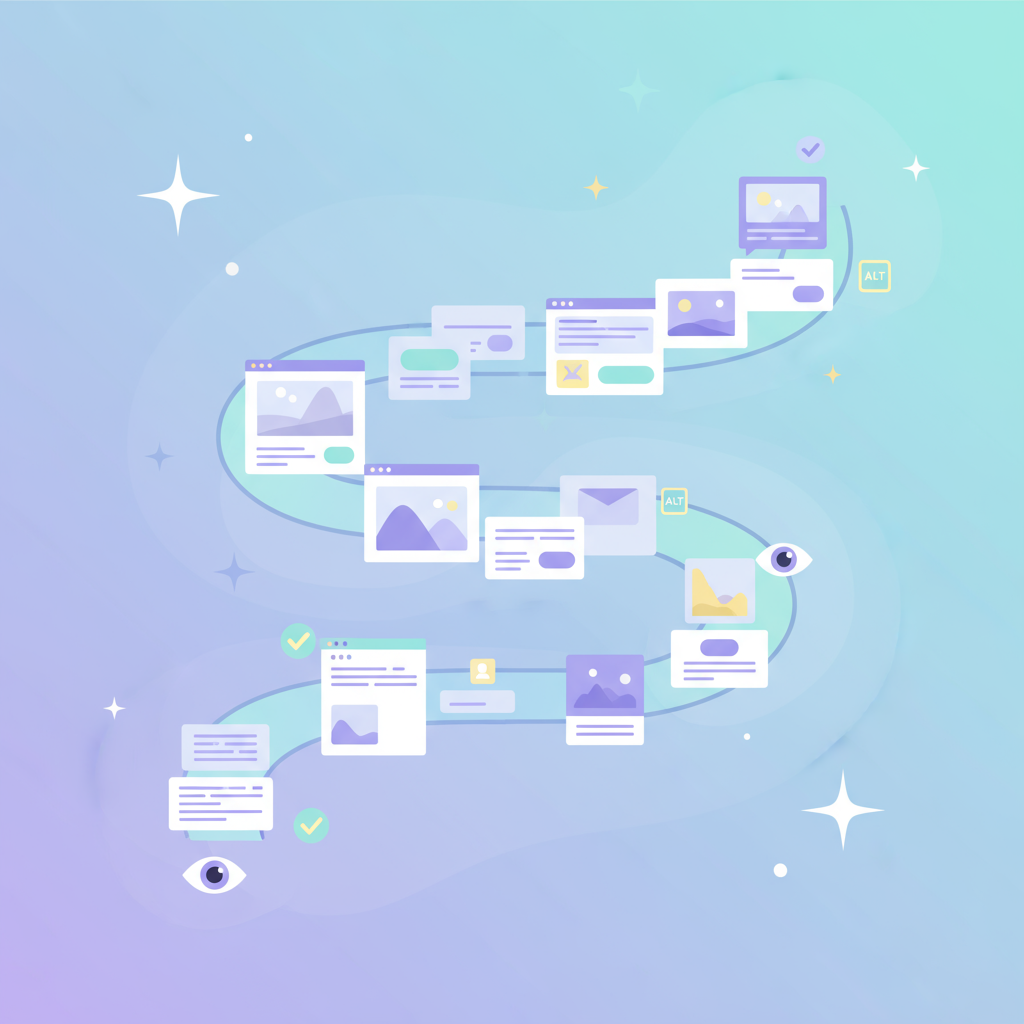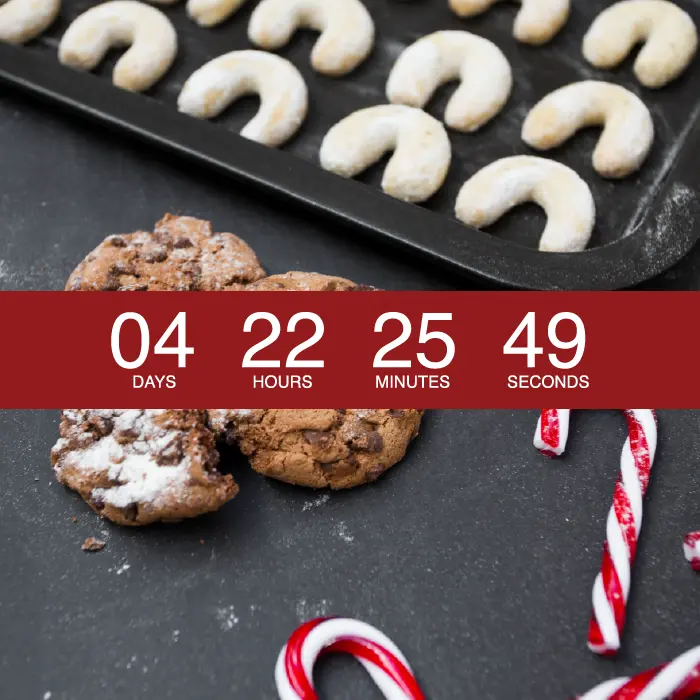
Have you received any emails with Christmas countdown timers and thought, I wonder how they did that? You’re in luck—today, we’ll show you how. Countdown timers in emails are a fun tool for adding dynamic, attention-grabbing motion – see our video tutorial at the above link! Here’s how to create a festive timer for all of your Christmas email marketing needs:
WHY ADD A CHRISTMAS COUNTDOWN TIMER?
Honestly, we’re surprised we haven’t seen more December timers in emails this season. More brands should consider using them! Here’s why:
- Adding Christmas countdown tickers is easy! Seriously. It’s just a matter of copying-and-pasting a few lines of code.
- Timers captivate readers’ attention better than static images.
- A countdown creates urgency. Seeing a ticking clock gives readers an incentive to act now—resulting in a conversion rate that increases by as much as 400 percent for some brands.
- Including a timer demonstrates that your brand is visually sophisticated, innovative, and thoughtful.
Plus, the festive holiday season is the perfect time to use a timer. With time-sensitive promotions and shipping deadlines—not to mention a flood of competing emails—seasonal timers are a smart way to send a clear message, add visual interest, and help your message stand out. And you don’t have to save these timers just for Christmas—they’re an awesome way to jazz up your emails when New Year’s rolls around, too. Before we jump into the how-to, let’s take a look at a few emails that do a great job incorporating Christmas countdown timers.
CHRISTMAS COUNTDOWN DESIGN INSPIRATION
Society6
You don’t have to set your countdown timer for December 25 — you can also use it to count down to when a sale will end, or notify a customer when their free trial is almost over. Here, Society6 used a timer with a countdown to the shipping deadline day to receive orders by December 24.

Function of Beauty
This hair care company used a mid-December email with a countdown timer to notify readers that it’s time to get moving: Order by this Sunday, the email said, and we’ll get your gift under the tree in plenty of time.
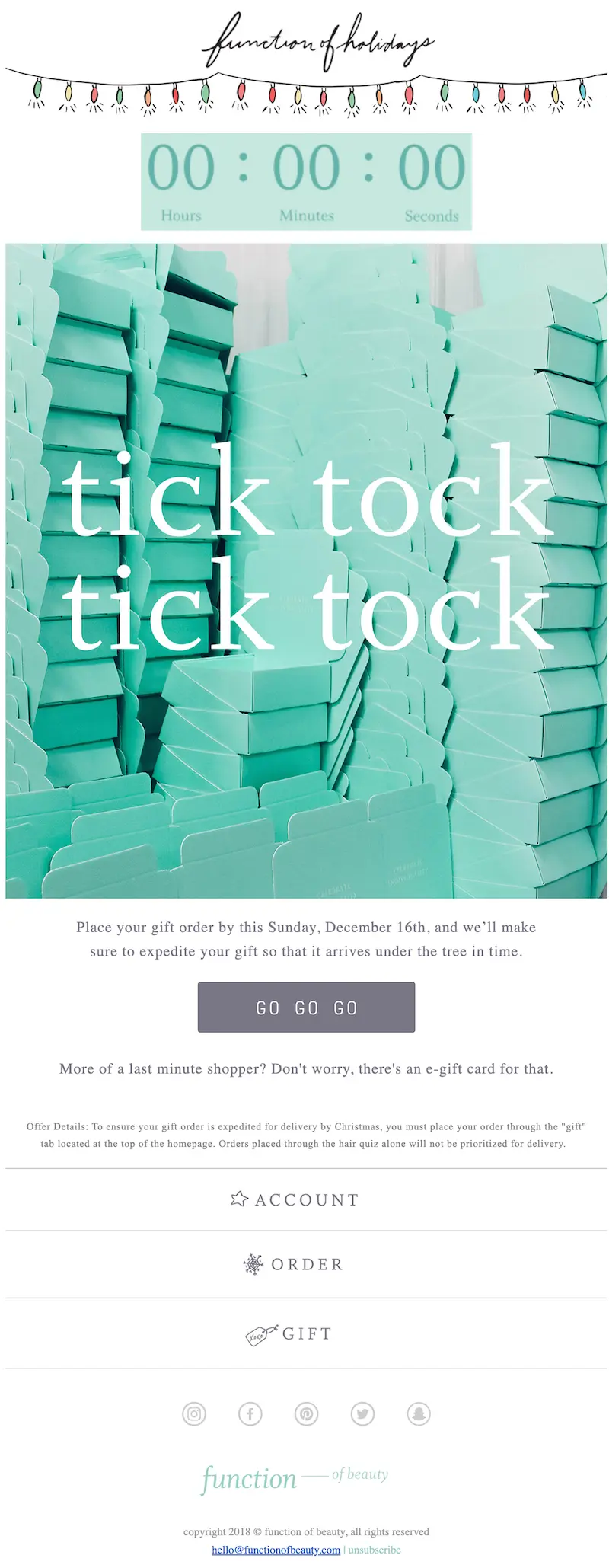
Timberland
Timberland got creative—instead of creating a ticker with the numbers running, the company added a calendar strip at the top of the email with an X on the day the message was sent.

The sky’s the limit with countdown timers, and remember, they’re easy to create and insert into a message. Plus, 99 percent of email providers display countdown timers correctly, meaning almost all of your email list can enjoy. So, let’s get started on the tutorial!
TOOLS YOU’LL NEED
Here are some tools to help you build an email with a merry countdown:
- Use the BEE editor to build and design our email message.
- Use a free email countdown timer generator. We like Sendtric because it’s simple to use (and, yes, free!) Plus, the timer it creates is an animated GIF, so it will render well in email. A number of online platforms (listed below) also offer easy-to-use countdown timers to add to any email campaign:
- FreshRelevance
- PowerInbox
- MotionMail
- Promofeatures
You can also use looped GIFs as your countdown timer by choosing a timer GIF from Tumblr or Giphy and inserting it into the email. HTML timers load more quickly, though; they also look professional, and aren’t that difficult to make.
YOUR HOW-TO GUIDE
To show how easy it is to add Christmas countdown timers to emails, let’s recreate this email from Paper Culture, the online card shop.
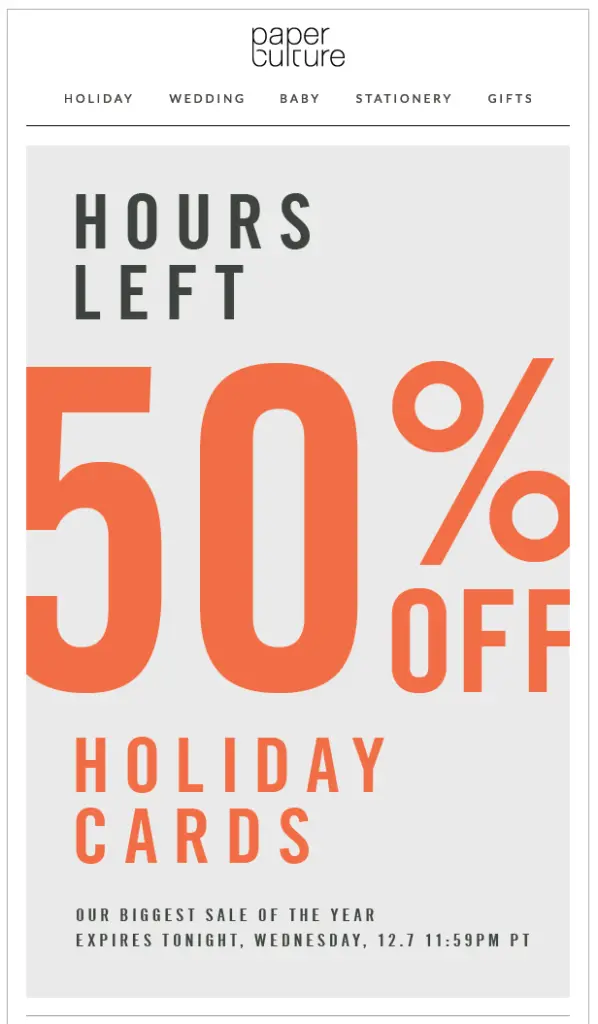
This email actually doesn't have a timer in its original design. Instead, the message (a static image) simply says there are Xhours left in the sale. But wouldn't the email be more compelling if it showedhow many hours are left in a countdown timer?
Video overview: How to build a Christmas countdown email
How easy is it to add one in your email message? As easy as watching our two-minute video tutorial! Be sure to check out our steps below for all the details.
STEP 1: DESIGN THE EMAIL IN BEE
Open up the BEE editor and start with a basic single-column template. Trim Paper Culture’s image and add it to the template. You don’t need the “HOURS LEFT” text at the top because that’s where the timer will be placed, and plain text (the fine print) will also be added to the bottom of the email. Doing this will balance the text-image ratio better, which is an email design best practice.
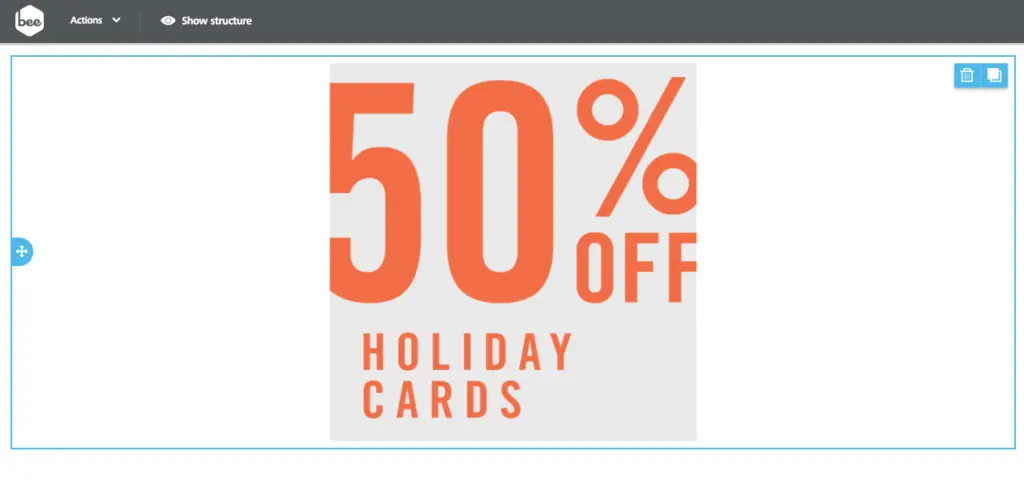
Here's our message with the remaining text and header:
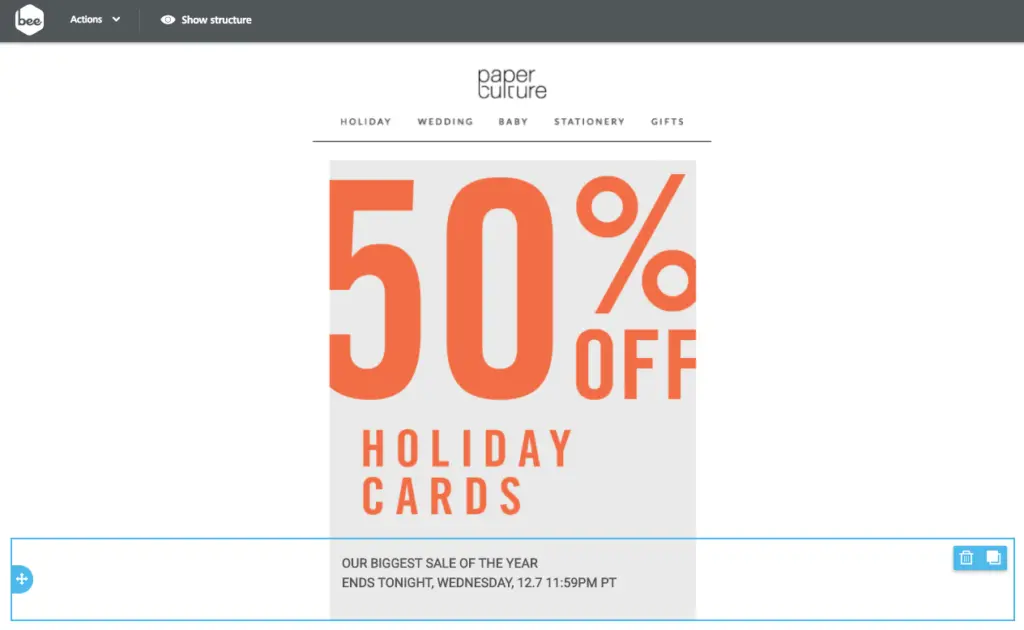
To create a placeholder for the countdown timer, add an HTML block. This is where the timer code will be dropped once it's created.Here's how the HTML block looks in the Content menu. Just grab and drag it into the template.

Place it above the 50% off image, as seen below.
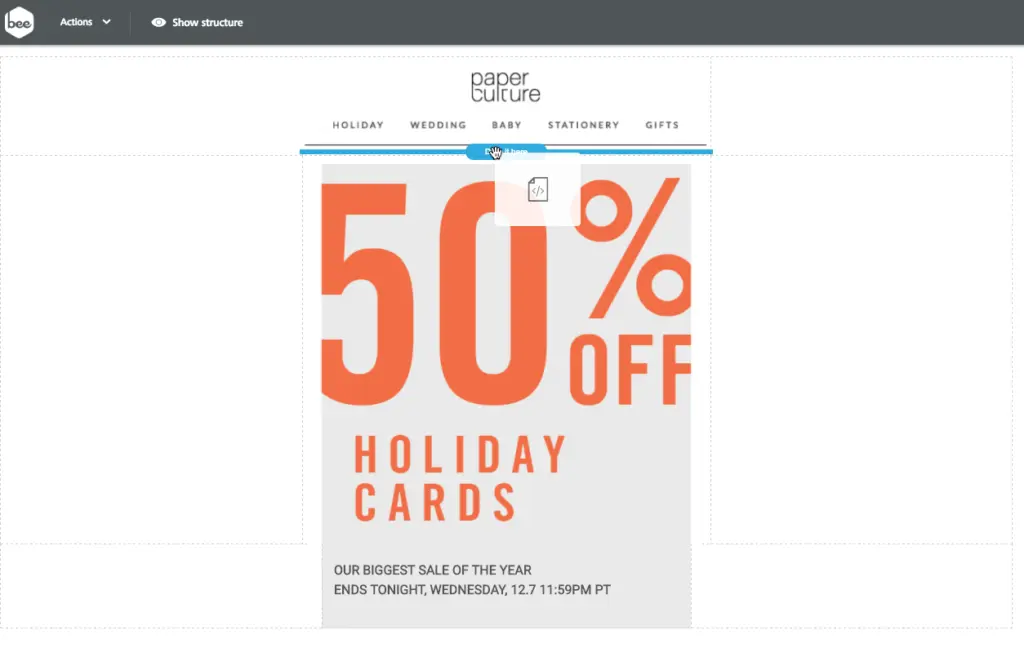
Now, the message is ready for the timer.
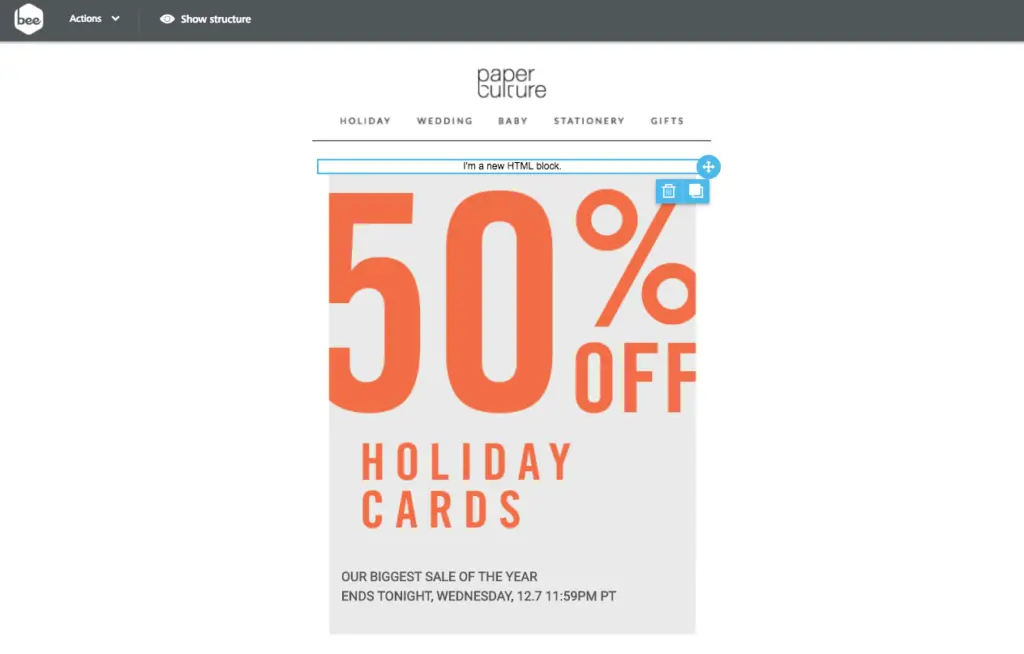
STEP 2: MAKE THE COUNTDOWN TIMER WITH SENDTRIC
Creating a free email countdown timer withSendtric is a pretty straightforward process.
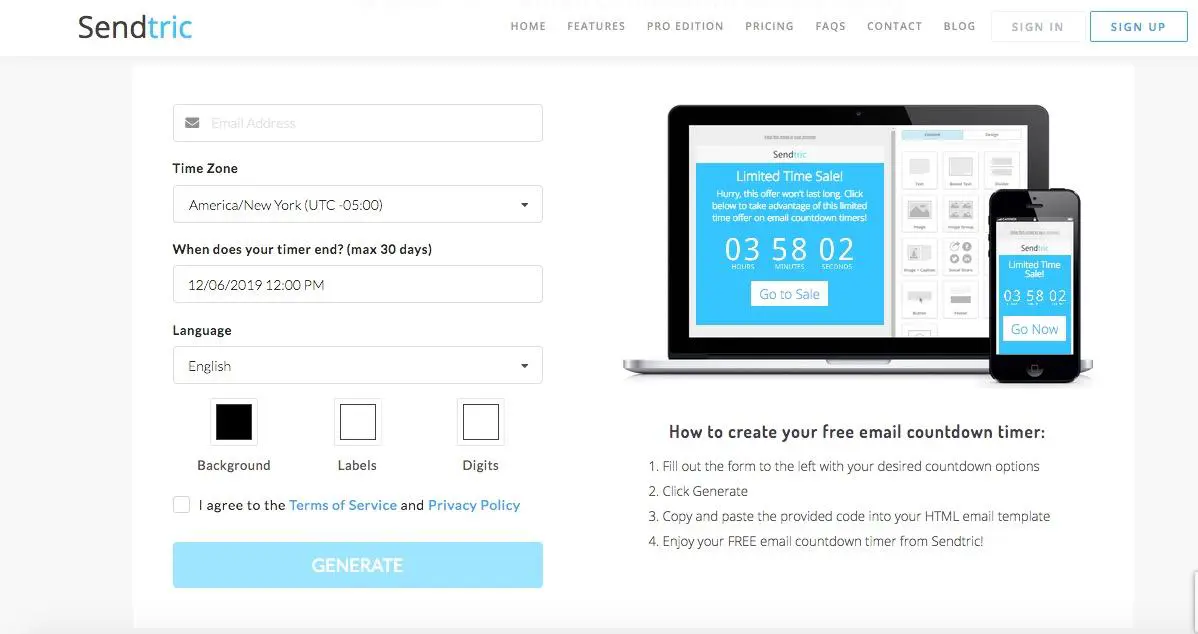
After entering an email address, add the campaign end date. You can set a date that’s up to a month out. Paper Culture’s sale already ended, so let’s choose a future date just to illustrate how the timer works. (Remember to keep time zones in mind as you choose your end date and time; Sendtric can help you with this step.)Next, update the background and numbercolors. Use an online HTML match tool to find the exact colors (with hex codes) that you want. Click Generateand you have the HTML code for the timer:Then, copy the code from the text box and paste it into the HTML content block.
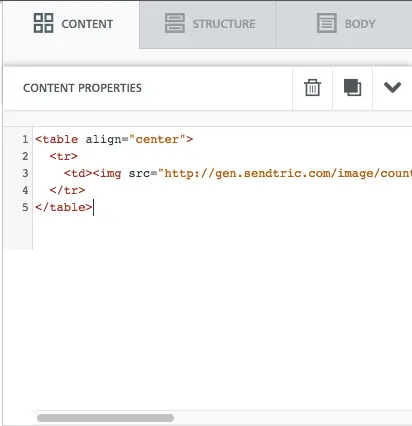
And...voilá! Here is the result:
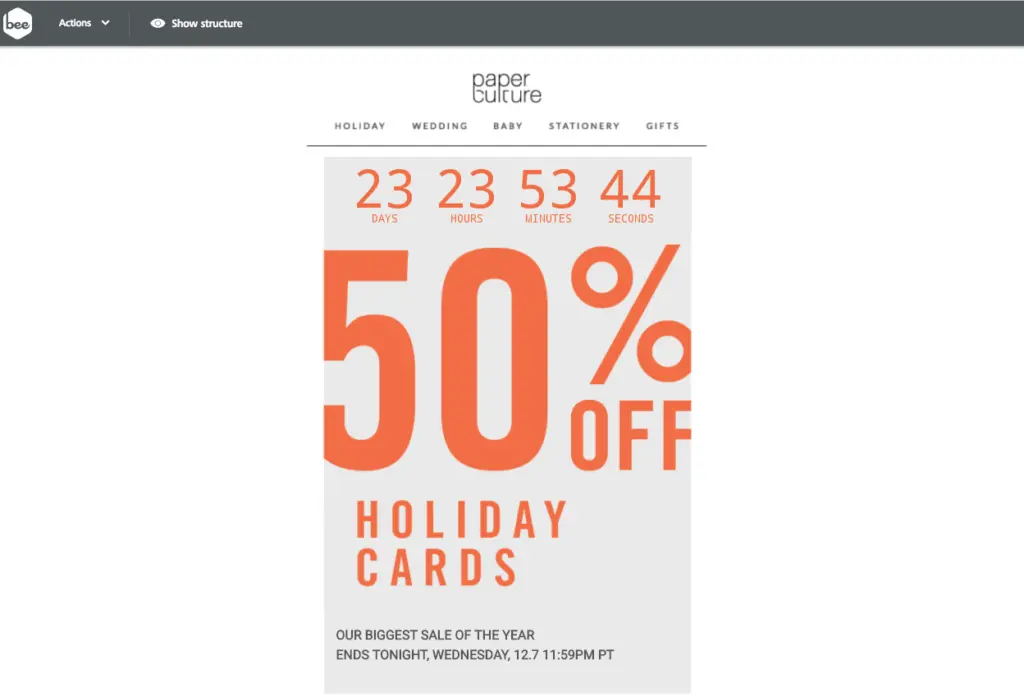
To give some context, drag in a text box either above or below it. Finally, add a short line of copy. And for an extra personal touch this holiday season, you could even consider using a similar approach to create a Christmas countdown email signature.
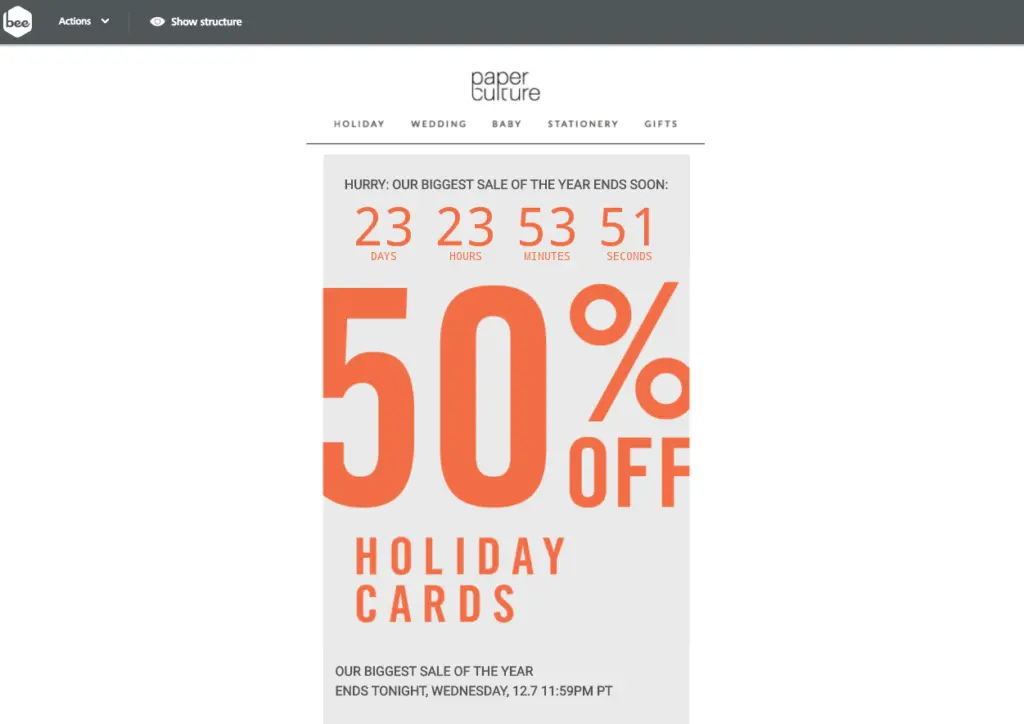
USING A COUNTDOWN TIMER IN EMAIL? GO PRO!
There’s no excuse not to try countdown timers in your next holiday email campaign! If you’re not already using BEE, sign up for a BEE Pro free trial to enjoy access to additional templates and design features—including templates specifically made for Christmas email design. Now, how many days until Christmas?


